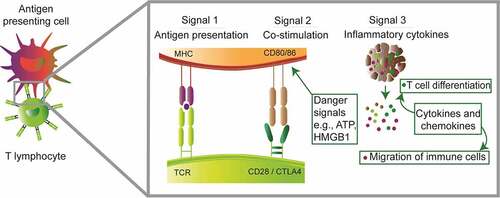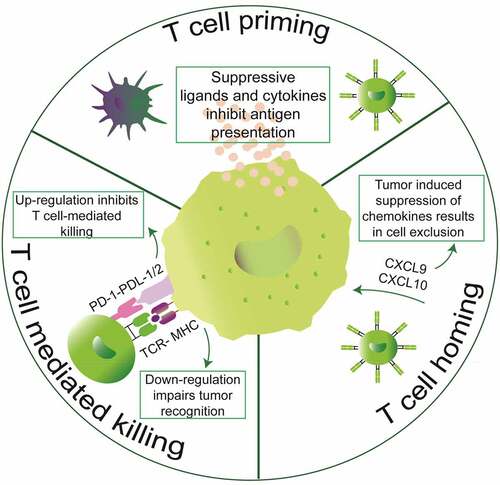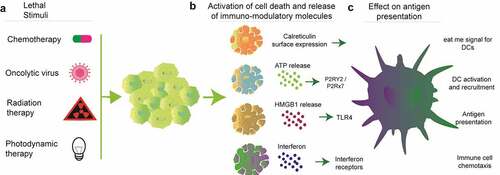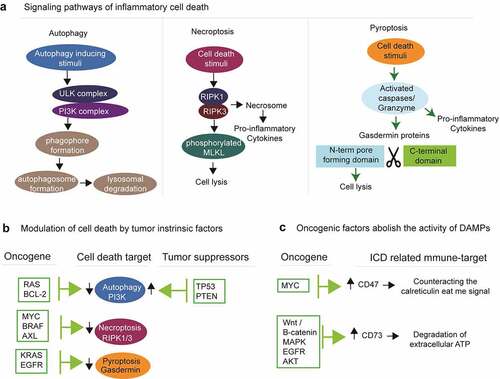Figures & data
Figure 1. Mechanisms of tumor antigen presentation

Figure 2. Mechanisms of tumor-mediated immune evasion. Tumors can inhibit intrinsically developed immunity at the three stages of anticancer immunity cycle. Tumors secrete suppressive cytokines and ligands to inhibit T cell priming. Moreover, tumors can also conspire the secretion of chemokines that are essential for entry of cytotoxic T lymphocytes into the tumor stroma. Lastly, tumors can also inhibit T cell-mediated killing either by downregulating components of the antigen processing and presentation machinery or by expressing T cell inhibitory ligands such as PD-L1/2

Figure 3. Mechanisms of ICD. Several types of lethal stimuli (a) activate tumor cell stress and cell death that leads to the surface expression of the “eat me” signal calreticulin and extracellular release of ATP, HMGB1 and interferons (b). In a concerted effort, the danger molecules released during ICD promote antigen presentation and immune cell trafficking (c)

Figure 4. Tumor intrinsic oncogenic factors dictate the activation and execution of ICD. (a) Diverse genotoxic and metabolic stimuli initiate signaling pathways to activate autophagy, necroptosis and pyroptosis. (b) All these three types of inflammatory cell death can be modulated by tumor intrinsic factors. (c) Several types of oncogenes evade ICD by indirectly activating immune-suppressive ligands

